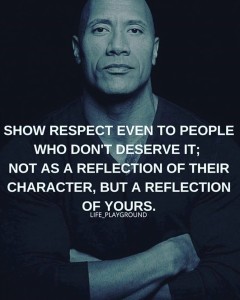You may recall a week or so back I reposted a recipe I saw online for some ice cream:
INGREDIENTS:
2 cups of walnuts
2 cups of water
1 cup of maple syrup or honey
2 dessert spoons of cacao powder
1 dessert spoon of vanilla extract (optional)
1/2 teaspoon of Himalayan or celtic sea salt (optional)
Well a week back I had a crack at it.
I forgot to add the water when I transcribed the recipe.
And we have a freezer full of very ripe bananas.
So two bananas went into the mix.
Made the first batch and Julie didn’t think it was anything special.
If anything a bit strong in the chocolate department.
Tried hazelnuts instead of walnuts in the next batch and halved the cacao.
Improvement but still no cigar.
I then used cashews, still with only one table spoon of cacao.
Better still.
Then I swapped out the honey and replaced it with maple syrup.
Pay dirt!
So I mixed all the batches together and froze it
Julie and I have been enjoying just a spoonful of it after dinner each night for the last week.
Tonight I gave some to Bronwyn and she loved it.
Wanted the recipe even.
So here’s the final recipe:
2 frozen bananas
2 cups of cashews
1 cup of maple syrup
1 rounded dessert spoon of cacao
1 dessert spoon of vanilla
1/3 teaspoon of Himalayan rock salt
It does not freeze hard, it stays fairly malleable.
Try adding the water to it like the original recipe suggests.
Take out of the freezer after two hours and reblending it to make it even smoother.
Enjoy!
Show Respect
NO, RADIATION LEVELS AT FUKUSHIMA DAIICHI ARE NOT RISING
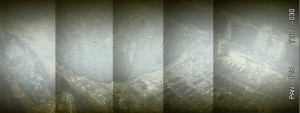
In response to visual investigation results and high radiation measurements recently taken by TEPCO inside Fukushima Daiichi Unit 2, many news outlets have published stories with headlines like “Fukushima nuclear reactor radiation at highest level since 2011 meltdown.” (The Guardian, Feb. 3, 2017). This has led to a number of alarming stories claiming that radiation at Daiichi has “spiked” to unprecedented levels. That’s not what the findings indicate, however. In addition, Safecast’s own measurements, including our Pointcast real time detector system have shown radiation levels near Daiichi to be steadily declining…. …The process of removing melted fuel debris from the damaged reactors at Fukushima Daiichi is expected to take decades, and these recent findings remind us once again that TEPCO has little grounds for optimism about the challenges of this massive and technically unprecedented project.
http://blog.safecast.org/2017/02/no-radiation-levels-at-fukushima-daiichi-are-not-rising/
World Leaders Duped By False Climate Data
A landmark paper exaggerated global warming It was rushed through and timed to influence the Paris agreement on climate change. America’s National Oceanic and Atmospheric Administration broke its own rules. The report claimed the pause in global warming never existed, but it was based on misleading, ‘unverified’ data.
https://www.facebook.com/cfact/posts/10154861647440281
The number-one mind-control program at US colleges
Here is a staggering statistic from the National Alliance on Mental Illness (NAMI): “More than 25 percent of college students have been diagnosed or treated by a professional for a mental health condition within the past year.”
Let that sink in. 25 percent.
Colleges are basically clinics. Psychiatric centers.
Colleges have been taken over. A soft coup has occurred, out of view.
https://jonrappoport.wordpress.com/2017/02/07/the-number-one-mind-control-program-at-us-colleges/
Baby Dies In Car Seat
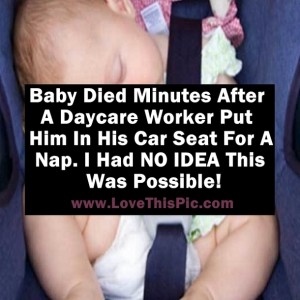
Please bring this to the attention of parents of very young babies.
11-week-old Shepard Dodd died tragically after being put in his infant car seat. The death was an accident but it actually happens much more often than it should. Now, Shepard’s parents are determined to make sure this tragedy doesn’t happen to any other baby.
The little boy was in the home of his licensed daycare provider. At nap time, he was swaddled and placed in his car seat. Since Shepard had a runny nose and little congestion, the daycare provider thought he would sleep better in the upright position the car seat provided.
Since he wasn’t in a moving vehicle, the straps were left unbuckled and off of him. The baby fell asleep, and his head fell down in a chin-to-chest position, which closed his airways. Because he was so young, he didn’t have strength in his neck muscles to move his head, and he died of asphyxiation.
His parents are taking his story to the media to prevent other babies from this horrible death.
http://www.lovethispic.com/blog/10477/baby-died-minutes-after-daycare-worker-put-him-in-car-seat-for-a-nap.-i-had-no-idea-this-was-possible
Would you like 10 extra, healthy years on your life?
Well here’s one way to significantly contribute to that. It is a reminder program to take a break. Why is that important? Because sitting for 6 hours a day takes 10 years off your lifespan. But the way to reduce the destructive effects of it are as simple as just standing up every 10 minutes. So that’s what I have the timer on BreakTaker set to. 10 minutes. Every 10 minutes when it pops up, so do I. I just stand at my desk and do a stretch up or a neck stretch then sit down and resume work. Here’s the link to download it. It’s free too!
http://www.techerator.com/breaktaker/
Sometimes My Thoughts Get Bored
7 Things Every Mother Needs to Tell Her Daughter About Breast Cancer Prevention
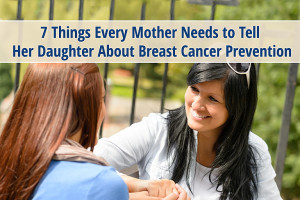
Here are some really simple, really basic tips to apply or share…
Benjamin Franklin’s old saying, “An ounce of prevention is worth a pound of cure” is never more appropriate than when it comes to breast cancer prevention. According to the American Institute for Cancer Research, at least 33 percent of breast cancer is preventable. Many natural health practitioners suspect that percentage is actually much higher. By simply adopting healthy lifestyle practices, it is estimated that you can bring that breast cancer prevention figure closer to 50 percent.
It is crucial to learn the things that can put women at higher risk for breast cancer. Not only do you want to avoid these risk factors, but also teach your daughters (and sisters and friends) about them. As a breast cancer coach, I always discuss these important breast cancer prevention tips with my clients.
7 Tips for Breast Cancer Prevention
-
Better Nutrition Comes from Whole Foods and Organic Foods
A healthy diet that provides good nutrition is the foundation of having good health. It is critical to teach our children how to eat wholesome nutritious foods and avoid packaged, processed foods. The goal is to avoid or minimize sugar, and to get back to the basics of wonderfully prepared natural and organic whole foods including vegetables, fruits, grains, legumes, and high quality free-range animal foods. Our bodies were designed to operate optimally on a whole foods diet (not a processed foods diet) and certainly not on chicken nuggets, soft drinks, and French fries.
The need for everyone to eat organic produce is at an all-time high due to our fruits and vegetables being so highly sprayed with cancer-causing pesticides. Many foods are genetically modified and it is becoming increasingly clear that GMOs are not safe for us to consume. In addition, soil depletion is occurring, which yields crops that are lower in nutrients than what was being produced just a few decades ago.
Organically grown animal foods are also a much better choice because conventionally raised animals are being pumped full of hormones and antibiotics that are increasing the incidence of breast cancer. These factory farmed animals also eat a diet that is unnaturally high in foods (corn and soy) that promote inflammation (high in omega-6 fats) when we consume them. Choosing organic produce and animal foods (preferably pasture-raised because these animals are, for the most part, eating what nature intended them to eat and will be much lower in omega-6 fats) not only decreases your cancer risk, it is also much better for the planet.
-
Avoid Toxic Cosmetics and Personal Care Products
Toxic chemicals are now present in just about everything we use in our homes and on our bodies, from dish washing liquid to eye shadow. These chemicals (and there are about 70,000 of them) are known hormone disrupters.
In addition to being toxic and carcinogenic, these substances can increase the estrogen load in the body over time and are difficult to detoxify through the liver. Called “xenoestrogens” (foreign estrogens), they mimic our body’s own estrogen and can alter hormone activity. Growing evidence implicates xenoestrogens in a wide range of human health problems, including breast cancer.
The easy solution is to use non-toxic or organic personal care products and cosmetics. It is important to know that the word “natural” on the label means almost nothing because the product can still contain toxic chemicals. It is best to look for organic certification on the label and to know what ingredients to watch out for. What goes on your skin gets in your bloodstream so it’s important to be proactive about this and to minimize toxic chemicals. What’s in your bloodstream can easily circulate throughout your body and into cells that create your hormones and organs.
Personally, I scrutinize every single thing I put on my body and I suggest you do as well. From nail polish (don’t use it) to hair spray to mascara. A good source of information to determine the relative safety (or dangers) of ingredients in personal care products and cosmetics is the Environmental Working Group’s Skin Deep database.
-
Move Your Body
The American Cancer Society estimates that half of all cancer deaths could be avoided by practicing healthy lifestyle habits such as simple exercise. Recent research tells us that obesity, especially in the middle-adult years, increases the risk of breast cancer.
It is important to teach your daughter an active lifestyle and it is best to lead by example. Take her hiking, skating, for long walks in parks, have her participate in sports, ballet, dancing. Whatever gets her moving and enjoying physical activity! Also, tell her why it is so important.
-
Keep Your Cell Phone Away from Your Body and Out of Your Bra
Studies have determined that heavy use of cell phones increases the chance for brain tumors. Children are more vulnerable to electromagnetic frequencies because they have thinner skull bones and smaller heads. Their brain tissue also has a higher conductivity and this puts them at a higher risk.
Although there does not at present appear to be any studies which link breast cancer risk with cell phone use, I have seen too many women use their bras to hold their cell phones. As a cancer coach, I know of several women who tucked their cell phones into their bras and later developed breast cancer in that breast.
A doctor at an alternative cancer clinic being interviewed stated that three women under his care at that time for breast cancer had very often placed their cell phones either under the bra strap or in their bra and developed a tumor in that exact location! We may not know for sure that cell phones cause breast cancer, but it is relatively simple to put your cell phone elsewhere, away from your body.
-
Use Meditation or Other Relaxation Techniques
It has long been known that prolonged periods of unmanaged stress can lead to diseases such as cancer. Nearly every one of my coaching clients tells me that they were under an extraordinary load of stress in the lead-up to their breast cancer diagnosis. Doctors tend to refute this, but science is starting to catch up and understand how cortisol, the main hormone that is released during periods of stress, can lead to disease such as breast cancer.
One of the best things you can teach your daughter is meditation. Children who learn how to meditate and relax deal more effectively with stress. They also learn how to live in the moment more often, how to distance themselves from stress and anxiety, and how to settle their minds, thus reducing cortisol levels and so much more. Again, this is about you leading by example because if your daughter still lives at home with you, she may be less likely to do this if she doesn’t see you doing it. If you don’t know how, perhaps you can learn and meditate together.
-
Don’t Smoke and Don’t Drink Alcohol (or Keep it to a Minimum)
You’ve heard this before and it’s so important that it bears repeating. Both smoking cigarettes and drinking alcohol puts you at a higher risk for breast cancer, other cancers, and heart disease. Smoking has been linked with increased cancer risk, especially if someone smokes regularly before their first child. If you or your daughter smokes and has trouble quitting, switch to American Spirit additive-free cigarettes. Even better and cheaper is to roll your own with non-toxic paper using organic tobacco. Even getting away from commercial cigarette brands is a huge step in the right direction.
Studies on alcohol have shown that compared with non-drinkers, people that have one alcoholic drink per day have a small increase in risk. However those who have two to five drinks daily increase their breast cancer risk by one-and-a-half times over those who do not drink alcohol.
-
Avoid Birth Control Pills
Most doctors, after writing a prescription for birth control pills, likely don’t tell their patients, “you are increasing your risk of cancer”. Oral contraceptives increase a woman’s risk of certain cancers. In particular, cancers of the breast, cervix, and liver, says the National Cancer Institute’s own website. A recent study done with African American women revealed that oral contraceptive use increased the risk of estrogen-receptor positive, estrogen-receptor negative, and triple negative breast cancers. The risk declined after a woman stopped using oral contraceptives, but was still a causative factor for estrogen-receptor positive breast cancer for up to 15-19 years after stopping, and even longer for estrogen-receptor negative breast cancer.
https://thetruthaboutcancer.com/7-things-breast-cancer-prevention/
This Former Techie Owes His Fortune to Electronic Devices. Now He Thinks They’re Dangerous.
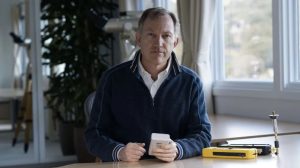
Yet another man gets well after minimising his exposure to EMFs.
Silicon Valley isn’t the best place to be hypersensitive to electromagnetic fields.
Peter Sullivan and I are driving around Palo Alto, California, in his black Tesla Roadster when the clicking begins. The $2,500 German-made instrument resting in my lap is picking up electromagnetic fields (EMFs) from a nearby cell tower. As we follow a procession of BMWs and Priuses into the parking lot of Henry M. Gunn High School, the clicking crescendos into a roar of static. “I can feel it right here,” Sullivan says, wincing as he massages his forehead. The last time he visited the tower, he tells me, it took him three days to recover.
Sullivan is among the estimated 3 percent of people in California who claim they are highly sensitive to EMFs, the electromagnetic radiation emitted by wireless routers, cellphones, and countless other modern accouterments. Electromagnetic hypersensitivity syndrome—famously suffered by the brother of Jimmie McGill, the lead character on AMC’s Better Call Saul—is not a formally recognized medical condition in most countries and it has little basis in mainstream science. Dozens of peer-reviewed studies have essentially concluded that the problem is in peoples’ heads.
That’s what Sullivan used to think, too. A Stanford computer science major who has worked as a software designer for Excite, Silicon Graphics, and Netflix, he paid little mind to EMFs, which he once viewed as harmless and inevitable. His wife joined Google early on and now serves as its chief culture officer—founder Sergey Brin sometimes drops by the couple’s home sporting Google Glass. “I thought that anybody that talked about the health effects of EMFs was a complete idiot. I thought that they just were not science-y,” Sullivan recalls. But then he got sick.
Around 2005, Sullivan started having trouble sleeping. He lost weight precipitously and struggled to maintain focus. After his top-flight Stanford doctors failed to figure out what was wrong with him, he tried every alternative remedy on the books, from cutting out gluten to taking chelating agents to purge his body of heavy metals. Nothing really worked. He noticed, however, that he felt weird after talking on a cellphone or plugging into a laptop charger. So like any good health hacker, he kept debugging.
A feng shui consultant in Silicon Valley knew a guy in Los Angeles who called himself a “building biologist” and had reputedly worked wonders for Richard Gere. Sullivan flew the guy up to his $6 million home in a leafy Los Altos neighborhood and watched with interest as the man probed the baseboards of Sullivan’s newly renovated bedrooms, bulky instruments flashing and buzzing. The consultant’s verdict: Sullivan’s house was an EMF disaster zone. The wifi and cordless phones would have to go. He’d need to rip out the walls and change everything.
This was a bit like asking a winemaker to quit drinking or advising an auto exec to commute on a fixie. Sullivan took things slow at first, installing some metal shielding around the electrical conduits in his downtown Los Altos office to block a portion of the radiation. He subsequently found that a 30-minute catnap in his office left him more replenished than a whole night’s sleep at home, so he began napping there regularly. One day when he felt like the EMFs in his home were really messing with him, he drove up to a hiking trail in the Los Altos hills and slept in the parking lot.
By the time I met Sullivan in person, one bright day this past spring, he had regained the lost weight and was feeling good. A former Navy pilot who used to land fighter jets on aircraft carriers, Sullivan still has a military crispness in his posture and elocution. Having recently retired from tech at age 40, he now devotes most of his time to exposing the hazards of EMFs. He has even brought up the matter with a few high-ranking friends at Google. “This is the new smoking,” he recalls telling them. “It’s just like the beginning days, when the evidence is there and people aren’t catching on.”
Many controlled studies do, in fact, show that people who claim to suffer from electromagnetic hypersensitivity experience symptoms when exposed to electromagnetic fields. But if those same people are unaware that the EMFs are present, the correlation between the symptoms and the exposure evaporates. The leading explanation is what’s known as the “nocebo” effect—people feel sick when exposed to something they believe is bad for them. Case in point: In 2010, residents of the town of Fourways, South Africa, successfully petitioned for a cellphone tower to be removed due to a rash of illness in the area. It was later revealed that the tower wasn’t operational during the period of the complaints.
But don’t expect Jimmie McGill’s big brother to give up his space blanket just yet. Other research suggests that EMFs do have measurable biological effects, albeit in lab animals. A $25 million study released in May by the National Toxicology Program found that male rats exposed to radio-frequency radiation, the kind emitted by cellphones, were more likely to develop two forms of cancer—although the findings were controversial. Joel Moskowitz, the director of the Center for Family and Community Health at the University of California-Berkeley and a believer in electromagnetic hypersensitivity syndrome, argues that the wireless industry has used its financial clout to suppress essential health research. “This is very much like tobacco back in the 1950s,” he concurs. “The industry has co-opted many researchers and has stopped funding many people who were finding evidence of harm.”
Sullivan, who majored in psychology as an undergraduate, refuses to believe that he’s just being neurotic. Through his foundation, Clear Light Ventures, he has given about $1 million to anti-EMF advocacy groups and researchers that the wireless industry won’t touch. They include retired Washington State University biochemistry professor Martin Pall, who has proposed a biological mechanism for EHS, and Harvard neurology professor Martha Herbert, who has suggested there could be links between EMFs and autism.
Laura Torres, who worked with Sullivan in the early 1990s as a product manager at Silicon Graphics, remembers him as a guy who “totally thinks outside the box.” He created software to log customer service calls, then a novel invention and a big-time saver for the company’s tech support team. “He really takes a creative approach to solving problems, which I think is what he is doing with this EMF thing,” she says.
Sullivan says his anti-EMF advocacy should not be viewed as an affront to his fellow techies: “We are hoping that the industry, instead of being like tobacco and going through denial, will be more like the automotive industry and say, ‘Okay, we are just going to keep improving safety. We will sell you more stuff that is safer and lower power.’ And it will be a win for everybody.”
During my visit, Sullivan walks me through his home’s $100,000 worth of EMF-proofing. In his wood-paneled home office he points out a $1,000 Alan Maher technical ground, a device that helps channel electrical noise away from power outlets, and a plug-in Stetzer filter, which makes “a nice clean sine wave in your electricity,” as my host puts it. He flips a desktop switch to cut off power to his MacBook—he rarely works on it while it’s charging. He made an exception last night after the battery died and says he ended up feeling wired and jittery as a result.
We step outside and through a gate, crunching over groundcover to the shingled exterior of his first-floor bedroom. Sheets of black mesh hang from a nearby fence to block a neighbor’s wifi signal. A nearby power line is wrapped in a material that dissipates certain electrical frequencies as friction, like a string dampener on a tennis racquet. Sullivan has installed a switch by his bed that lets him shut off his home’s electricity while he sleeps. “Our bedroom is like camping!” he says proudly. “We have all the luxury of being inside, but none of the EMFs.”
Indoors on a kitchen stool his wife, Stacy, is hunched over a laptop plugged into an ethernet cable. “She’s in wireless jail,” Sullivan jokes.
“I used to be able to just do this wherever I wanted to work,” she responds wistfully. “But it’s okay.”
In terms of protection, this residence doesn’t even compare with another one Sullivan owns in the Los Altos hills. We hop in his Tesla (modified to shield him from its EMFs) and drive there. Originally built in the early 1900s as a hunting lodge, it had been renovated into a shrine to modernism by an HP executive. Sullivan bought it a few years ago and converted it into what he calls a “model healthy home.” He’s hoping its shielded environment will help me to understand what sudden exposure to EMFs feels like.
In an empty upstairs bedroom that Sullivan sometimes uses as an office, a graphite paint called WiShield coats the walls. Clear, EMF-blocking films cover the windows. Conductive tape on the floor carries any electrical current to a high-frequency ground in the closet. Sullivan switches on his EMF meter: zero. “I thrive on it!” he says. “I get my best work done here.”
He hands me a bottle of oxygenated water and instructs me to down it. This will supposedly unclump my blood, heightening my EMF sensitivity. Rummaging through the closet, he emerges with an air pump from his son’s aquarium. He has discovered that this pump maxes out his instruments, producing “a fucking nightmare magnetic field.” He holds it a couple of feet away from me and switches it on. I feel a small cramp in my stomach.
Maybe Sullivan was onto something. After all, birds and sea turtles use Earth’s magnetic fields to navigate, and foxes seem able to rely on them to detect prey. Then again, maybe all I’d felt was the nocebo effect. Sullivan suggested that I get to the bottom of it by spending a night at the shielded house. I didn’t feel the need, I told him, but I understood why he might. “When I wake up, it just feels like you can do anything,” he’d assured me. “You just feel completely different, like your world has changed.”

